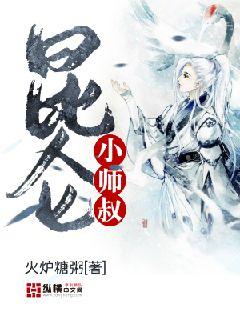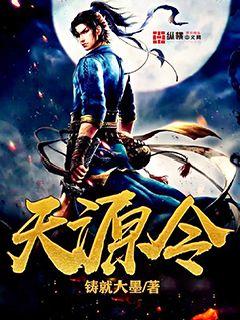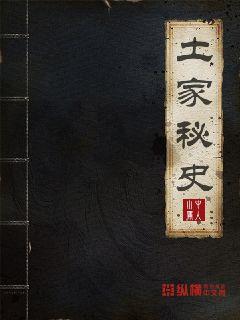国足vs日本免费直播|国足世预赛直播免费在线观看
- 来源:国足对日本直播比赛
- 2024-11-22 09:04:59

**文章摘要:**
本文探讨了韩国球员在中国联赛中的表现,并聚焦于跨国足球交流的重要性。首先,介绍了韩国球员在中国联赛中的崭露头角,以及他们在球场上的表现给中国足球带来的影响。其次,分析了韩国球员对中国足球水平的提升和促进中韩足球交流的作用。然后,探讨了韩国球员在中国联赛中的成功案例,并解析了其成功背后的原因和启示。最后,总结了韩国球员在中国联赛中的光芒对跨国足球交流的积极影响,强调了其对促进中韩足球合作与交流的重要意义。
**1、韩国球员在中国联赛的表现
**韩国球员在中国联赛中逐渐崭露头角,不断展现出优异的技术和出色的表现。
他们的加盟不仅丰富了联赛的多样性,也为球迷带来了更多的观赏亮点。
韩国球员的参与,提升了中国联赛的关注度和国际影响力。
**2、韩国球员对中国足球水平的提升与促进中韩足球交流的作用
**韩国球员的加入推动了中国足球水平的提升,为本土球员提供了更高水平的竞争环境。
他们的加盟促进了中韩足球之间的交流与合作,加深了两国球员间的了解和友谊。
这种跨国足球交流,不仅在技术层面上有所促进,也在文化和体育交流方面起到了积极的作用。
**3、韩国球员在中国联赛中的成功案例与成功背后的原因
**一些韩国球员在中国联赛中取得了骄人的成绩,成为了球队的核心力量。
他们的成功背后,既有个人努力的积累,也有中国联赛俱乐部提供的良好平台和发展机会。
同时,他们适应中国足球的特点,与队友们的默契配合也是取得成功的重要因素。
**4、韩国球员在中国联赛的光芒对跨国足球交流的积极影响
**韩国球员在中国联赛中的光芒,为跨国足球交流注入了新的活力和动力。
他们的表现不仅提升了中国足球水平,也促进了中韩足球之间的深入合作与交流。
这种积极影响将有助于加强亚洲地区足球的整体实力,推动足球运动在世界范围内的进一步发展。
**总结:
**韩国球员在中国联赛的光芒不仅展现了他们的个人魅力,也为跨国足球交流注入了新的活力。
他们的加盟不仅提升了中国足球水平,也促进了中韩足球之间的深入合作与交流。
韩国足球赛事一直备受关注,其最新比赛结果汇总如下:
1、联赛比赛结果
韩国足球联赛近期比赛激烈,各队实力对比明显。
首先,仁川联队在最近一场比赛中以2-1战胜了首尔FC,展现了强大的攻击力。
接着,全南天龙队在与浦项制铁队的比赛中,以0-0的比分险胜对手,展现了稳健的防守。
此外,水原三星队在与大邱FC的比赛中以3-2的比分取得胜利,表现出了顽强的意志。
2、杯赛比赛结果
除了联赛外,韩国杯赛的结果也备受关注,球队为了争夺荣誉拼尽全力。
首先,蔚山现代队在与光州FC的激战中,以4-3的比分险胜对手,晋级下一轮。
接着,大田市民队在对阵仁川联队的比赛中,以2-1的比分惜败,遗憾出局。
此外,釜山IPark队在与忠南FC的比赛中,以1-0的比分取得胜利,成功晋级。
3、国家队比赛结果
韩国国家队也在国际赛场上取得了一系列的比赛成绩。
首先,韩国国家队在与日本队的友谊赛中,以2-1的比分取得胜利,为球迷带来了喜悦。
接着,他们在与澳大利亚队的比赛中,以1-0的比分艰难获胜,展现了强大的团队实力。
此外,韩国国家队还在世界杯预选赛中与伊朗队进行了一场激战,最终以0-0的比分握手言和。
4、球员表现亮点
除了比赛结果,韩国足球赛场上也有许多球员表现出色,成为焦点。
首先,水原三星队的金大贤在最近的比赛中打入了关键进球,展现了出色的射门技术。
接着,首尔FC的朴成洙在比赛中多次助攻,成为球队的得分保障。
此外,大邱FC的金珍洙在防守端表现突出,多次化解对手的进攻威胁。
综上所述,韩国足球赛事的最新比赛结果呈现出一幅竞技激烈、球员表现出色的画面。无论是联赛、杯赛还是国家队比赛,都展现了韩国足球的实力和魅力。
### 文章摘要
赵瑞是中国足球中的新生力量,他不仅仅是一名年轻有为的球员,更是希望和梦想的化身。本文从多个角度深入探讨了赵瑞的成长历程、足球技艺、对团队的贡献以及未来的潜力。透过赵瑞这一人物,可以看到中国足球发展的希望与挑战,以及年轻一代球员在国内外舞台上的表现与成长。
---
1、成长历程
赵瑞从小便展现出对足球的热爱和天赋。他在家乡的青训经历如何塑造了他的职业道路?初入职业联赛后,他面临了哪些挑战与机遇?
随着时间的推移,他是如何从一个普通的足球爱好者成长为职业球员?他的家庭、教练和环境如何影响了他的足球生涯?
成长过程中的关键节点是什么?他如何在不断的竞争和挑战中突破自我?
2、足球技艺
赵瑞的足球技艺在国内外比赛中表现如何?他的技术特点和风格是什么?
他在场上的角色与定位如何,以及他如何利用自己的优势为球队创造机会?
分析他在比赛中的关键表现和技战术的应用,以及他与队友的配合与默契。
3、对团队的贡献
赵瑞在球队中扮演着怎样的领袖角色?他的领导风格和影响力如何体现?
他在团队中的积极影响力和团结力是如何培养和展现的?
他如何通过自己的表现和态度,激励团队成员追求更高的目标?
4、未来潜力
展望赵瑞未来的发展潜力,他在国内外赛场上的发展前景如何?
分析他在面对不同竞争对手和挑战时的应对策略和成长轨迹。
他如何为中国足球的发展带来新的希望与机遇?
总结:
赵瑞作为中国足球的新生力量,不仅仅是一名球员,更是年轻一代的象征。通过他的个人经历和足球生涯,我们可以看到中国足球在年轻球员的崛起和发展上的潜力和挑战。未来,他有望成为中国足球发展的重要推动者,带领团队走向更加光明的未来。
文章摘要:本文探讨了迈阿密热火2018年球员的成就与转变,从过去的困境与挑战到现在的重建与成功,再展望未来的潜力与可能性。通过对球队历史、现状和未来前景的详细分析,揭示了热火如何从低谷中崛起,成为当今NBA的重要力量。
1、过去的挑战与转变
在过去几年里,热火经历了诸多挑战与困境。球队在2016年和2017年季后赛中连续未能进入季后赛,这段时间被认为是球队发展的低谷期。管理层在面对老将球员退役和合同问题时,进行了大规模的阵容调整。这些调整不仅影响了球队的整体实力,还重新定义了球队的战略方向。
随着2018年球季的开始,热火在重建过程中逐步找到了新的平衡点。年轻球员和经验球员的结合,使得热火在阵容深度和球队化学反应方面迅速取得了进展。这一时期标志着热火从过去的挑战中走出,迎来了转折点。
随着教练团队的调整和战术策略的重新设计,热火在球队文化和整体实力方面开始呈现出新的面貌。这些变化不仅仅是战术层面的调整,更是一种组织文化的重建和精神面貌的焕发。
2、现在的重建与成功
当前,热火已经成为NBA赛场上备受瞩目的球队之一。通过管理层的持续努力和球员们的拼搏奋斗,热火在2018年后迅速重回季后赛舞台,并在其中展现了强大的竞争力。
关键球员的表现至关重要,其中包括队内领袖的崛起和年轻球员的成长。他们的个人能力和团队协作能力的提升,直接推动了热火在赛季中的表现。同时,球队内部的团结和默契也在不断加强,这是球队能够在关键时刻迅速适应和反应的关键因素。
此外,热火在战术执行和技术创新方面的投入,为球队赢得了更多的比赛,并逐步树立了起来。这种成功不仅仅是战绩上的提升,更是一种信念和精神的重塑,为球队未来的发展奠定了坚实的基础。
3、未来的潜力与可能性
展望未来,热火面临着诸多挑战和机遇。球队的年轻球员将继续成长,成为球队未来发展的重要支柱。他们的潜力和天赋为球队注入了无限的希望,也为球队的长远规划提供了坚实的基础。
除此之外,热火在球队管理和战略规划上的持续改进,将进一步提升球队的整体竞争力和影响力。这不仅包括球队内部的结构调整,还包括对外部环境和市场的敏锐洞察力。这种全面的发展战略,将有助于热火在未来的NBA舞台上保持竞争优势。
同时,全球篮球市场的不断扩展和影响力的提升,为热火开拓新的发展空间和商业机会。通过在全球范围内的品牌建设和市场拓展,热火将能够进一步巩固其作为体育界领袖的地位。
4、成就与转变的总结
总结而言,热火2018年球员的成就与转变展现了一支球队从挑战到成功的完整轨迹。通过过去的挑战与转变,热火在现在的重建与成功中找到了新的方向与动力。未来,热火将继续发挥其潜力与可能性,不断追求卓越并保持竞争力。
这一过程不仅仅是体育竞技的胜利,更是一种组织文化和精神面貌的蜕变。热火以其坚定的信念和无畏的拼搏精神,成为了无数粉丝和支持者心中的英雄,也为NBA联盟带来了新的活力和创新。
迪福球员,作为一位足球传奇,其职业生涯经历了丰富多彩的篇章。本文将从多个角度深入探讨他在足球界的辉煌历程与不朽传奇。
1、早年生涯与职业起步
迪福在青年时期展现出色的足球天赋,从早期的青训开始,便展示了与众不同的技术和意识。他在青年队的表现吸引了俱乐部和国家队的注意。
随着职业生涯的开端,迪福在哪些俱乐部展现了突出的才华和进步?他是如何从年轻的后卫转变为攻击性球员的?这一阶段的成长对他后来的发展有何影响?
迪福的职业生涯初期,不仅仅是技术和进步的展示,还有哪些重要的比赛和时刻标志着他作为一名顶级球员的崛起?
2、英超与国家队征战
迪福在英超联赛中的表现如何?他在哪些球队取得了显著的进步和成就?他是如何在顶级联赛中稳固自己的位置,并展现出与众不同的进球技术?
作为英格兰国家队的重要成员,迪福在国际赛场上有哪些耀眼的表现?他在国家队中的角色和贡献如何被看待?
迪福作为英超和国家队双料选手,他在俱乐部和国家队之间如何平衡,以保持顶级竞技状态?
3、转会和职业巅峰
迪福的职业生涯中有哪些重要的转会和职业巅峰时刻?他是如何处理转会市场和球员身份的?
他在不同俱乐部之间的角色和表现有何不同?他如何适应不同的战术体系和队友?
迪福在职业生涯的哪个阶段达到了他的巅峰状态?他在这些时期取得的成就和荣誉如何?
4、退役与遗产
迪福的退役过程和最后的职业生涯阶段是怎样的?他是如何为俱乐部和国家队做出贡献并享受退休生活的?
作为一名足球传奇,迪福留给后人的遗产和影响是什么?他对足球界和他所处社区的影响力如何被看待和记忆?
迪福的职业生涯与足球传奇,不仅仅是他个人的成就,还有哪些故事和经历能够激励和启迪今后的足球新秀?
总结:
迪福球员的职业生涯和足球传奇充满了挑战与成就,他通过不懈努力和出色表现,不仅在俱乐部赛场上取得了多个荣誉,也为英格兰国家队贡献了无数精彩瞬间。迪福的退役标志着他在足球界的一个重要转折点,然而,他的影响力和遗产将长久留存,激励着无数年轻球员追求自己的梦想。
迪福的故事告诉我们,天赋与努力并重,才能创造不朽传奇。
Certainly! Here's the structured article on "Optimizing Training Performance through Nutrition and Diet for Professional Athletes":
**Abstract:**
Professional athletes rely heavily on nutrition and diet to enhance their training performance. This article explores key factors that optimize their performance through dietary strategies. It examines the role of macronutrients, micronutrients, hydration, and timing of meals in maximizing athletic potential. By understanding and implementing these factors, athletes can achieve peak performance and maintain optimal health.
---
**1、Macronutrients:**
Macronutrients play a fundamental role in the diet of professional athletes, influencing energy levels, muscle recovery, and overall performance.
Athletes typically require a balanced intake of carbohydrates, proteins, and fats to meet their energy demands and support muscle repair.
Carbohydrates serve as a primary fuel source, especially during high-intensity activities, emphasizing the importance of adequate intake and timing to sustain performance.
1、Proteins:
Proteins are essential for muscle repair and growth, with athletes needing slightly higher amounts to recover effectively from training sessions.
Timing protein consumption around workouts is crucial for maximizing muscle synthesis and adaptation to exercise-induced stress.
A variety of protein sources, including lean meats, dairy, and plant-based options, offer athletes flexibility in meeting their nutritional needs.
2、Fats:
Healthy fats contribute to sustained energy levels and support overall health in athletes, emphasizing sources like nuts, seeds, and fatty fish.
A balanced intake of omega-3 and omega-6 fatty acids aids in reducing inflammation and optimizing recovery post-training.
Adjusting fat intake based on training intensity and individual metabolic needs helps athletes maintain optimal body composition and performance.
3、Carbohydrates:
Carbohydrates are critical for replenishing glycogen stores and providing quick energy during intense exercise sessions.
Choosing complex carbohydrates such as whole grains and vegetables ensures sustained energy release and supports prolonged athletic performance.
Strategic carb-loading before competitions or high-demand periods helps athletes maximize glycogen storage and enhance endurance.
---
**2、Micronutrients:**
Beyond macronutrients, micronutrients are essential for maintaining overall health, supporting immune function, and optimizing athletic performance.
Athletes require adequate intake of vitamins and minerals to support physiological processes, including bone health, oxygen transport, and muscle contraction.
Key micronutrients such as iron, calcium, vitamin D, and antioxidants play crucial roles in reducing the risk of injury and illness among athletes.
1、Iron and Calcium:
Iron is vital for oxygen transport and energy production, particularly significant for endurance athletes to prevent fatigue and optimize performance.
Calcium supports bone health and muscle function, essential for maintaining skeletal integrity and reducing the risk of stress fractures.
Ensuring sufficient intake of these minerals through diet and, if necessary, supplementation helps athletes meet their unique nutritional demands.
2、Vitamins and Antioxidants:
Vitamins such as vitamin D, C, and E contribute to immune function and recovery, aiding in the repair of muscle tissue and reducing oxidative stress.
Antioxidants from fruits, vegetables, and nuts help mitigate exercise-induced inflammation and support cellular repair processes post-exercise.
Strategies to incorporate a diverse range of micronutrient-rich foods into an athlete’s diet promote overall health and optimize training adaptations.
3、Hydration:
Hydration is critical for maintaining performance and preventing dehydration-related complications during training and competition.
Athletes should monitor fluid intake to replace losses through sweat, adjusting consumption based on environmental conditions and individual sweat rates.
Optimal hydration supports thermoregulation, nutrient transport, and cognitive function, enhancing overall athletic performance and recovery.
---
**3、Timing of Meals:**
The timing of meals and nutrient intake around training sessions is crucial for optimizing energy availability, promoting recovery, and supporting adaptation to exercise stress.
Strategic meal timing helps athletes maximize glycogen storage, enhance muscle protein synthesis, and minimize muscle breakdown.
Pre-exercise nutrition focuses on providing adequate carbohydrates for fuel and minimizing gastrointestinal distress during workouts.
1、Pre-Exercise Nutrition:
Consuming a balanced meal or snack containing carbohydrates and a moderate amount of protein 2-4 hours before exercise provides sustained energy and supports muscle function.
Hydration before exercise ensures adequate fluid balance and enhances thermoregulation during physical exertion, optimizing performance and reducing the risk of dehydration.
2、Post-Exercise Recovery:
Immediately following exercise, consuming a combination of carbohydrates and proteins within the first 30 minutes to 2 hours supports glycogen replenishment and muscle repair.
Timing protein intake post-exercise stimulates muscle protein synthesis, facilitating recovery and adaptation to training-induced stress.
Incorporating micronutrients and fluids into post-exercise meals aids in rehydration, replenishment of electrolytes, and overall recovery.
3、Nutrient Timing Strategies:
Strategically timing meals and snacks throughout the day maintains stable blood sugar levels and sustains energy for consistent training performance.
Adjusting nutrient intake based on training volume and intensity helps athletes meet their energy demands and achieve optimal nutrient timing for enhanced performance.
Individualized nutrition plans tailored to training schedules and performance goals optimize nutrient timing strategies, supporting long-term athletic success.
---
**4、Conclusion:**
Optimizing training performance through nutrition and diet involves a comprehensive approach focusing on macronutrients, micronutrients, hydration, and meal timing.
By understanding the role of each component and implementing evidence-based strategies, athletes can enhance performance, support recovery, and maintain overall health.
Continued research and personalized nutrition plans are essential to meet the unique needs of professional athletes and maximize their athletic potential.
Overall, integrating these key factors into a structured nutrition plan empowers athletes to achieve peak performance and excel in their respective sports.
文章摘要:本文探讨了运动界对球员禁止纹身政策的态度。首先分析了纹身在运动员形象中的影响,接着讨论了不同体育组织对纹身规定的立场和执行情况。其次探索了纹身在文化多样性和个人表达自由之间的平衡问题,并分析了球员个人选择与公众形象之间的张力。最后总结了各方观点,提出了可能的未来发展方向。
1、纹身对运动员形象的影响
运动员形象的重要性
纹身在形象塑造中的角色
公众和赞助商的看法
2、体育组织的纹身政策
不同体育组织的规定比较
规定的执行与变通情况
公众反响与舆论压力
3、文化多样性与个人表达自由的平衡
纹身与文化身份的关联
纹身作为个人表达的权利
如何平衡文化多样性与形象需求
4、球员个人选择与公众形象的张力
纹身对球员个人品牌的影响
公众接受度的变化
球员自我表达与形象管理的策略
总结:
综上所述,运动界对纹身政策的态度复杂多样,需要平衡形象需求与个人表达自由,未来可能朝着更开放和包容的方向发展。
纹身政策的演变与执行将继续受到公众和运动员个体选择的影响。
上一篇: 哪里能看中国对日本的比赛
下一篇: 国足对日本世预赛










